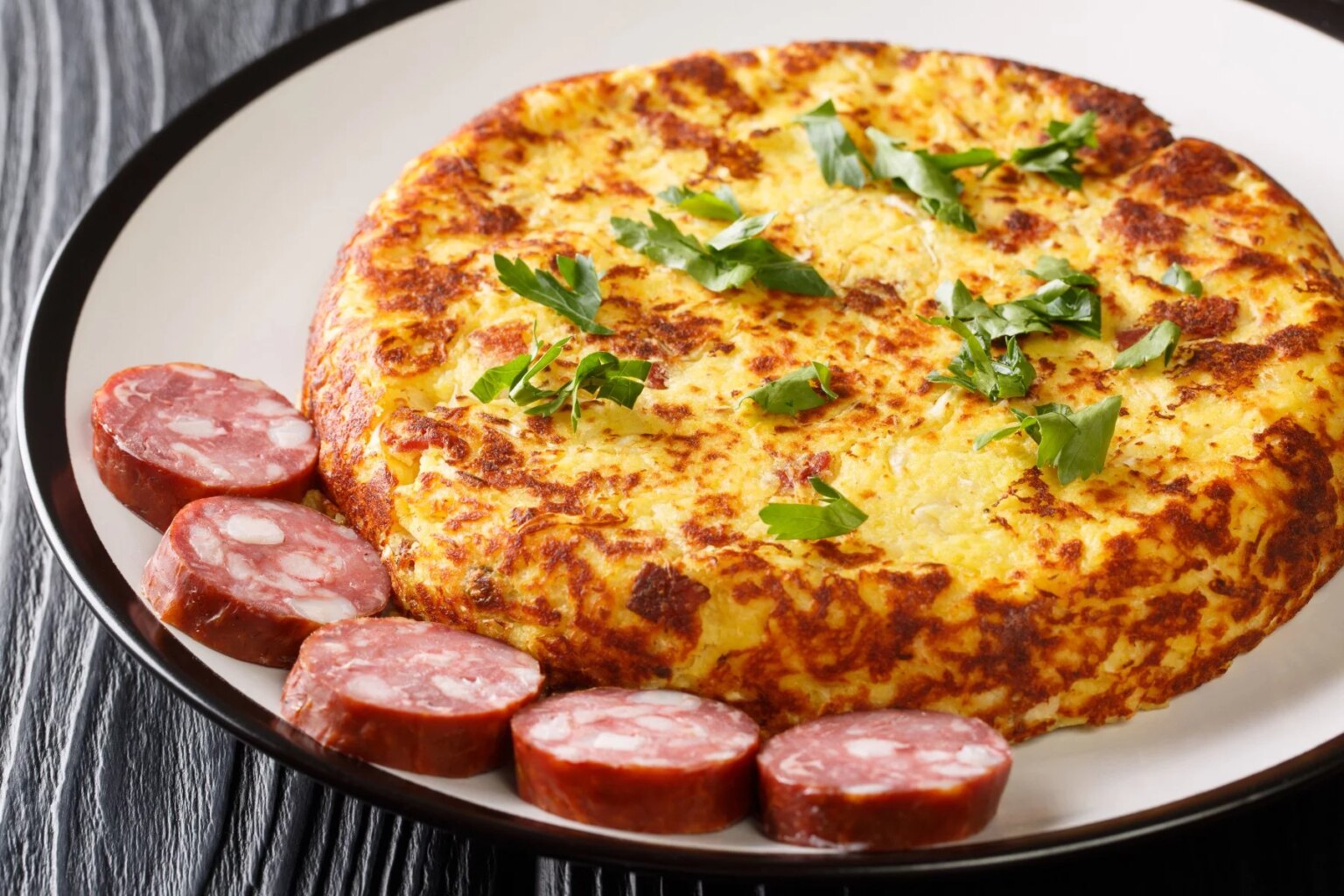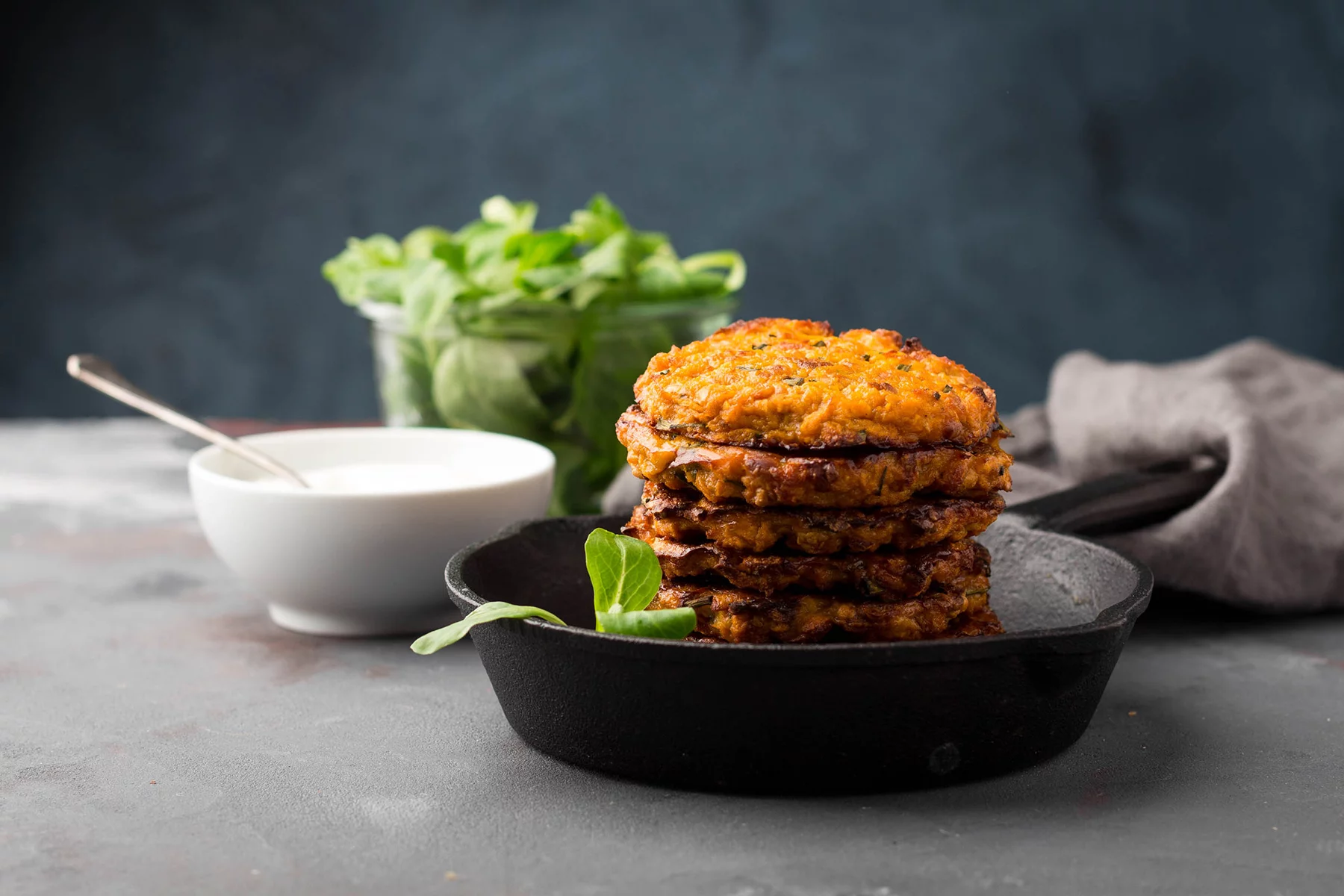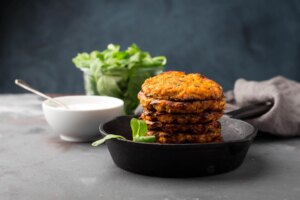Authentic recipes of the Grand Duchy are simple, hearty, and most likely have their origins elsewhere in Europe. This is because Luxembourg cuisine combines the country’s agrarian roots and long history of foreign influences.
Get an idea of what culinary treats are in store by reading the following information:
Cuisine in Luxembourg
Luxembourg is a small land, nestled at the crossroads of diverse European cultures. According to 2020 national statistics, around 626,000 people live in Luxembourg and it is one of the most densely populated regions of Europe. Furthermore, nearly half of the people who live in Luxembourg have a foreign nationality. These days, Luxembourg’s largest immigrant population is Portuguese (15.6%), followed by French (7.6%), Italian (3.7%), Belgian (3.3%), and German (2.1%). What’s more, approximately 185,000 non-residents contribute to Luxembourg’s culture and the economy as cross-border workers.
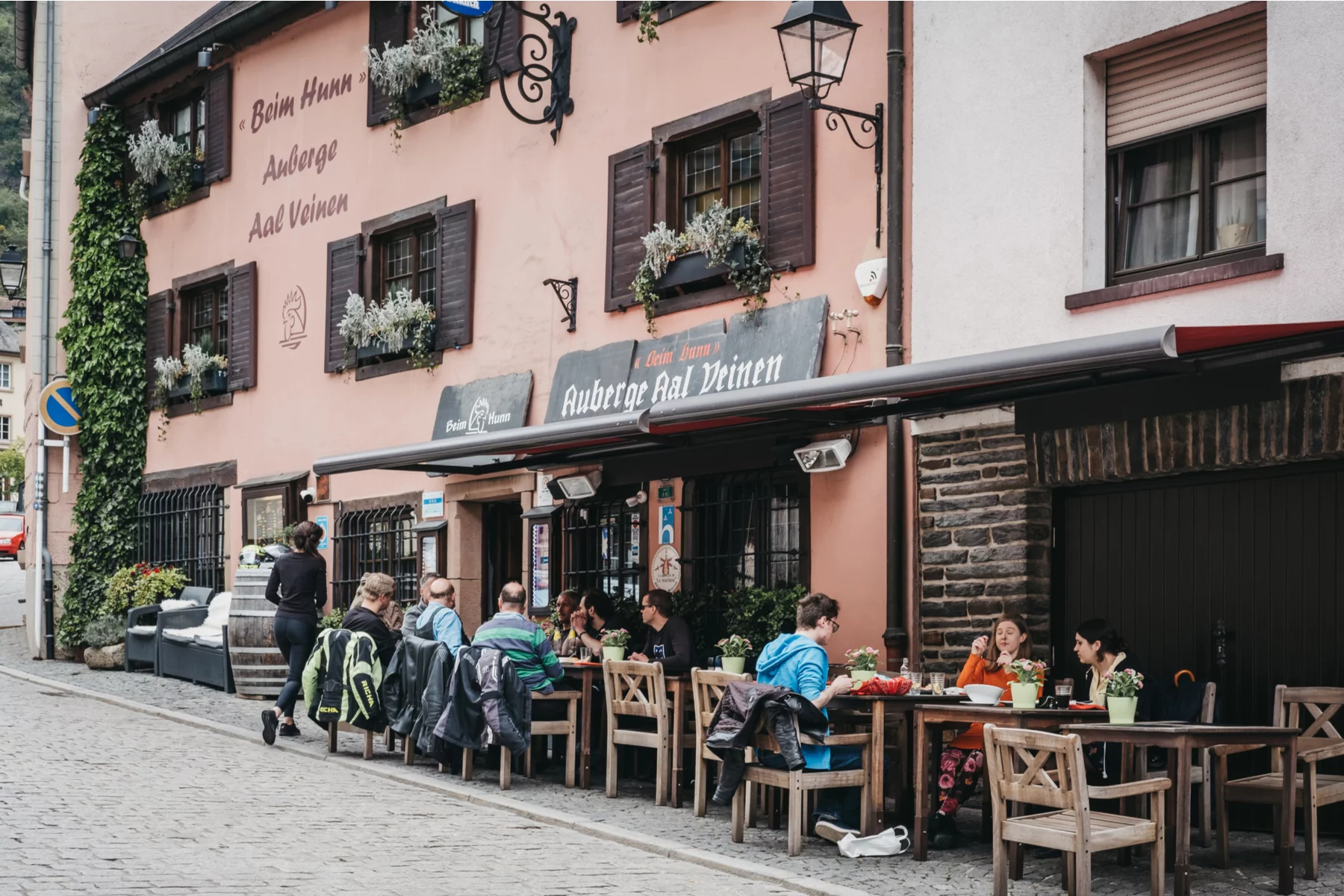
As Luxembourg is such an international destination, you are spoiled for choice when it comes to dining out. It is, after all, home to some of the most Michelin star-rated restaurants per capita. You may already be aware that Luxembourgish is the national language, although German and French are also official languages in the Grand Duchy. Therefore, you are likely to find menus and other information in one, if not all, of these languages. English is also prevalent in Luxembourg City.
As far as health and nutrition are concerned, Luxembourg has a relatively high level of obesity with 23% of adults falling under this category. Although this is close to the OECD average, experts consider the rise in adult obesity in Luxembourg over the past decade to be a public health priority.
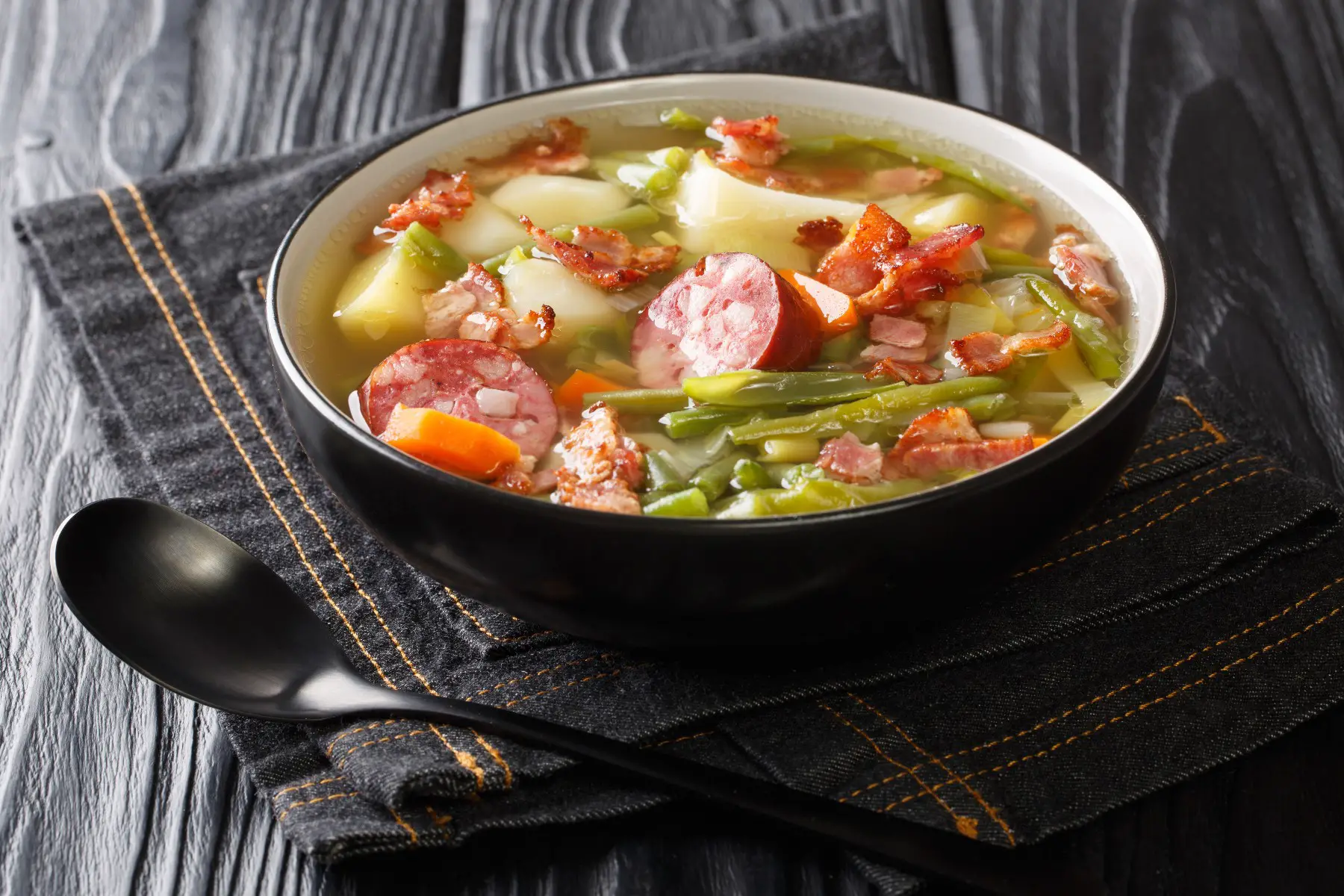
Luxembourg has a strong meat-eating culture, with 75% of people surveyed in 2018 reporting that they eat meat. One in two adults has a daily consumption of fruits and vegetables, which is below the average of EU countries. On the other hand, the country has one of the highest per capita consumption rates for organic products in the world.
The Luxembourger diet
Luxembourgers generally only eat one hot meal a day. Soups and bread are very typical, while potatoes are a staple in the Luxembourger diet.
Breakfast in Luxembourg
Kaffi (breakfast) is a small meal to start the day. People usually eat it between 07:00 and 09:00. Breakfasts in Luxembourg usually consist of a croissant or another baked good, a boiled egg or cereals, and coffee.
Lunch in Luxembourg
When Luxembourg was primarily an agrarian country, mëttegiessen (lunch) was often the main meal of the day. These days, however, lunch is more often a lighter affair for those who are working in an office.
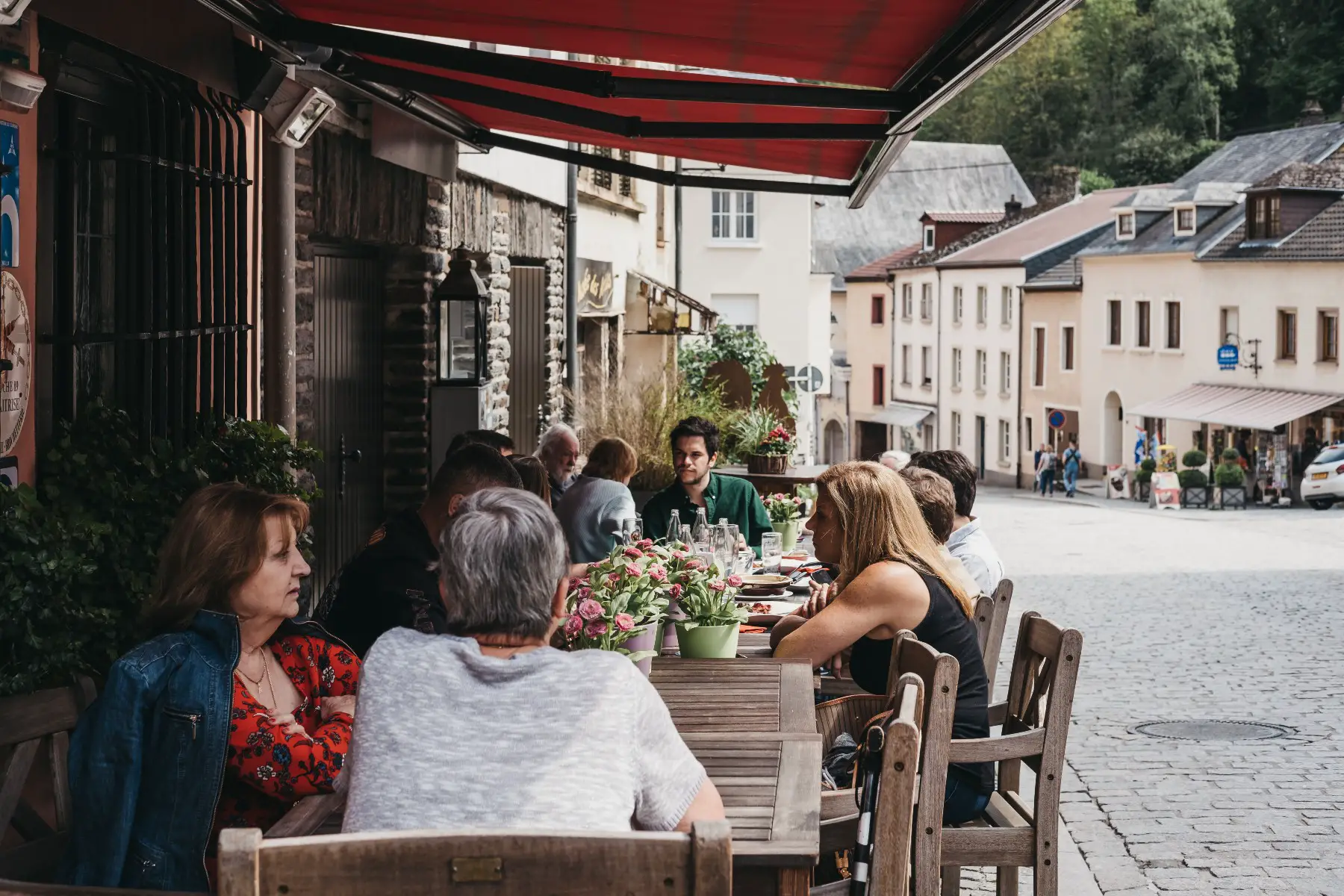
For instance, you might have a sandwich with a soup such as Bouneschlupp (bean, potator, and bacon soup) or Ietsebulli (green pea soup). People also often eat Gromperekichelcher (potato fritters) with soup.
Dinner in Luxembourg
Luxembourgers usually eat iessen (dinner) at around 19:00. As mentioned, Luxembourg cuisine tends to be hearty and dinner portions are, therefore, usually large. Traditionally, Luxembourgers have also eaten every part of the animal, so don’t be surprised to see some cuts of meat on a plate that you might find unusual. Take, for example, Féierstengszalot (meat salad with calf’s head), Kuddelfleck (tripe with a spicy tomato sauce), and Traïpen (fried blood sausage with applesauce).
Other popular dinner dishes include Kniddelen mat Speck (dumplings with bacon), Rieslingspaschtéit (meat and pie with Riesling wine), and hearty soups such as Gromperenzopp. They serve this potato-based soup in a deep bowl and top it with slices of sausage or bacon.
Snacks in Luxembourg
Luxembourg doesn’t have a time of day when people typically enjoy a snack break. This might be due to the larger portion sizes and heaviness of the food. That said, if you find yourself with the munchies between meals, then you could try the Lëtzebuerger Grillwurscht or Grillinger. Street vendors often sell these small, spicy pork sausages. Of course, with the close proximity to Belgium, you should have no trouble tracking down a portion of frites in the cities.
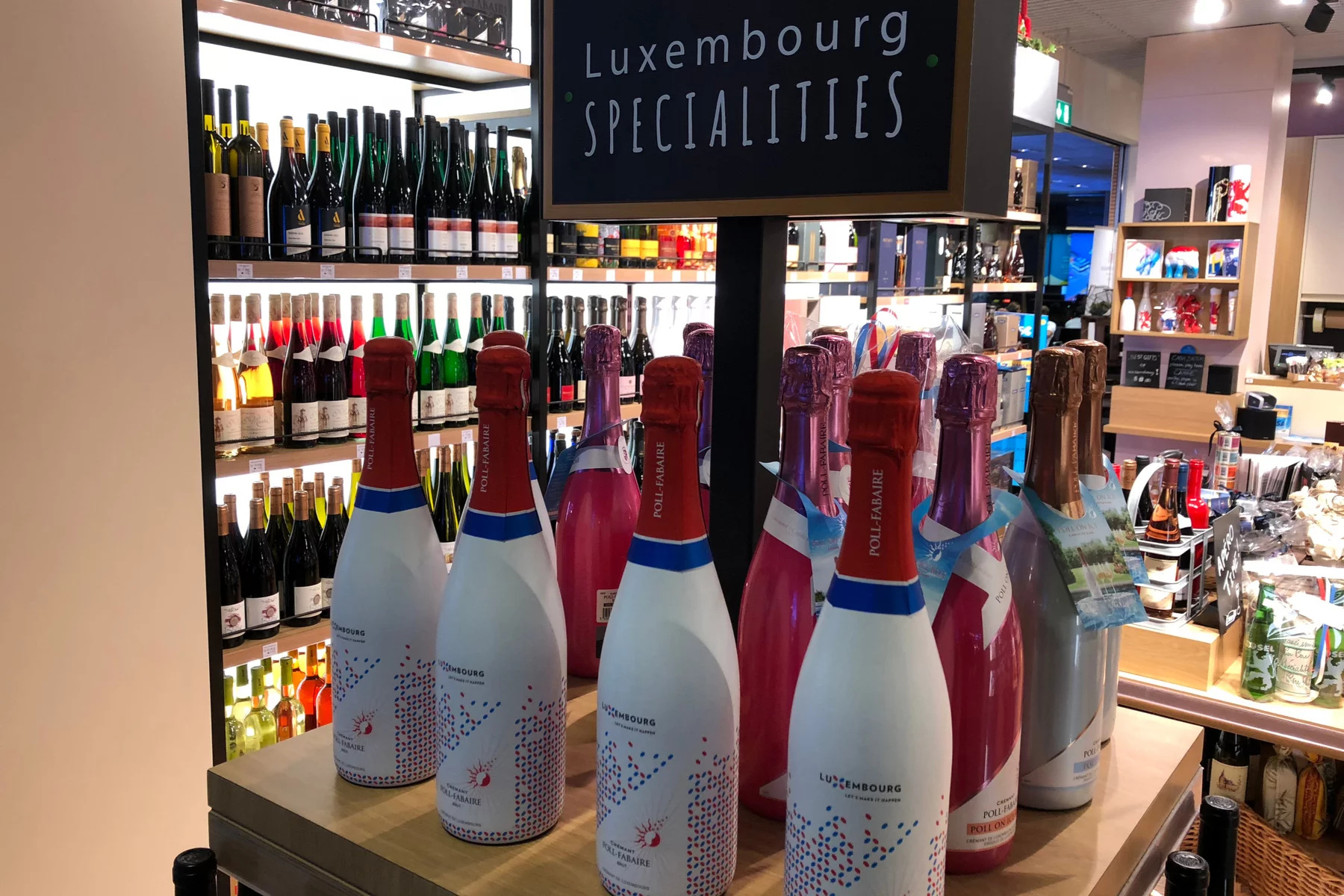
You might also want to wash down your snack with a local drink. Luxembourg produces excellent beers and wines (including its own sparkling wine, Crémant). Furthermore, the country has lower excise duty on alcohol than neighboring countries which draws many so-called alcohol tourists to the country. This combination has led to Luxembourg having one of the highest alcohol consumption rates in the world.
Special meals in Luxembourg
Christmas meal in Luxembourg
On Christmas Eve, Luxembourgers gather for an apéro, a talk and a light meal around the Christmas tree. Luxembourg is historically a Catholic country and many people attend mass the night before Christmas. For most families, the main time for the celebration is Christmas Day. Families and friends gather for a large meal around noon.
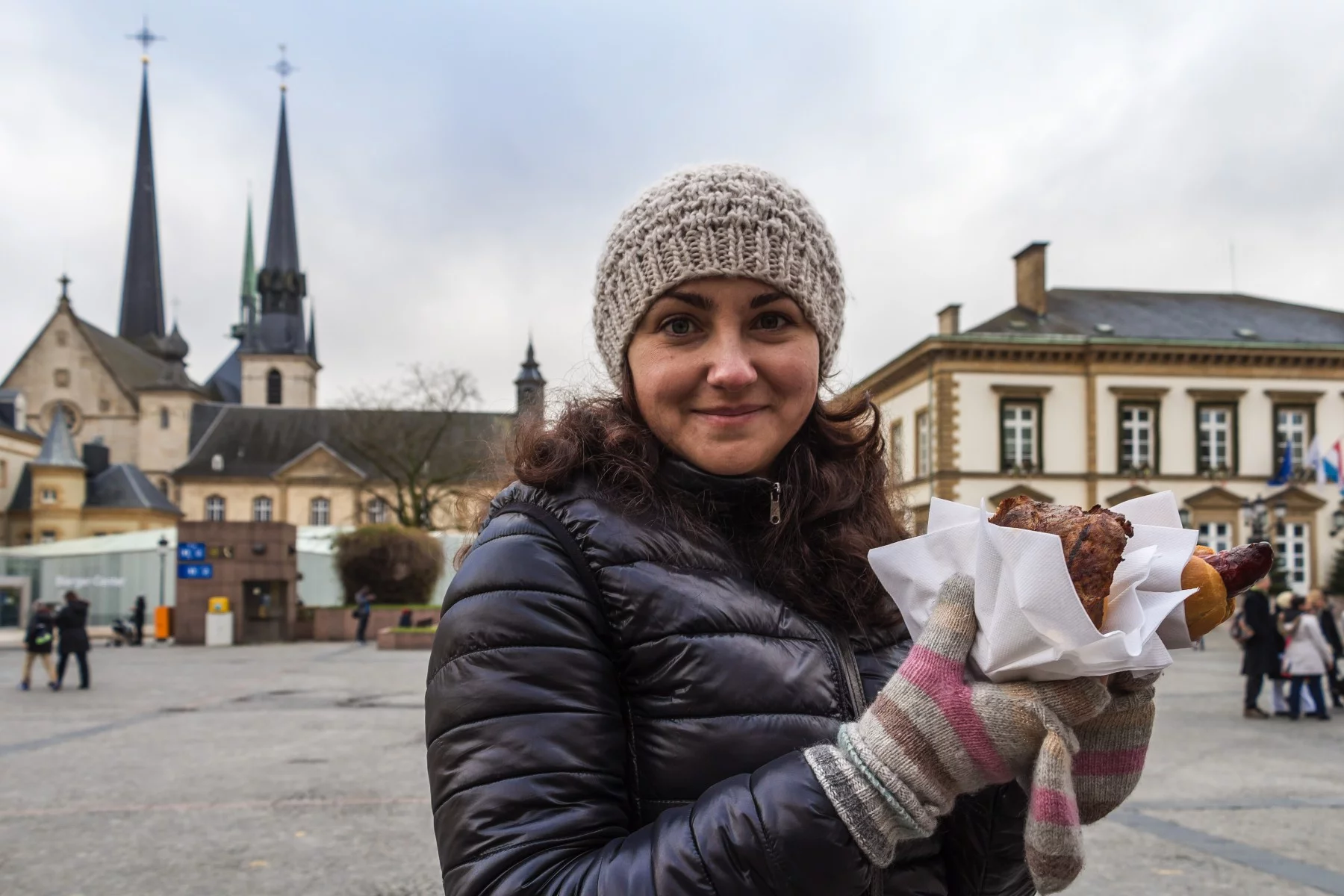
A traditional Christmas meal in Luxembourg cuisine is Träipen mat Gromperenzalot (black pudding with potato salad). However, they might also serve game meat such as venison or hare stew. These days, however, more families are also opting for non-traditional Christmas meals such as turkey, seafood, or fondue. Other popular Christmas treats are Boxemännercher (brioche in the shape of a man), Glühwäin (mulled wine), and Egg Nog (a drink made of sweetened milk, cream, vanilla, and rum).
Easter meal in Luxembourg
Another major holiday in Luxembourg for food and family is Ouschteren (Easter). The holiday festivities in Luxembourg really begin with Bretzelsonndeg (pretzel day) on the fourth Sunday of Lent. In this tradition, men give their sweetheart a pretzel or bretzel. These days, pretzels in Luxembourg are huge and covered with sweet icing and almond flakes.
Next, Luxembourgers mark Maundy Thursday, which falls four days before Easter Sunday, by eating herb soup and green vegetables. This is why they refer to the date as Gréngen Donnesdeg (Green Thursday). On Karfreiden (Good Friday), families tend to eat fish to observe the Catholic tradition. During this time, you will likely see specialties such as gebackene Fësch (deep-fried fish), grilled sole, or Saumonsquiche (salmon quiche) on the menu.
On Easter Sunday, families with children hide Easter eggs and candy. Luxembourgers usually prepare a large, midday meal of rabbit, duck, or pork roasts with potatoes and spring vegetables. Closing out the holiday celebration on the Monday following Easter is a folk festival and market called Emaischen. Make sure you don’t miss this festival in Luxembourg City and Nospelt where you can enjoy traditional Luxembourg food and drinks, folklore dances, and fun activities for kids.
Popular ingredients in Luxembourg
Much of Luxembourg is farmland and the people take a lot of pride in their homegrown fare. The Grand Duchy produces more than enough beef (114%) to fulfill the country’s demands. It also generates 99% of the country’s milk and 67% of its pork.
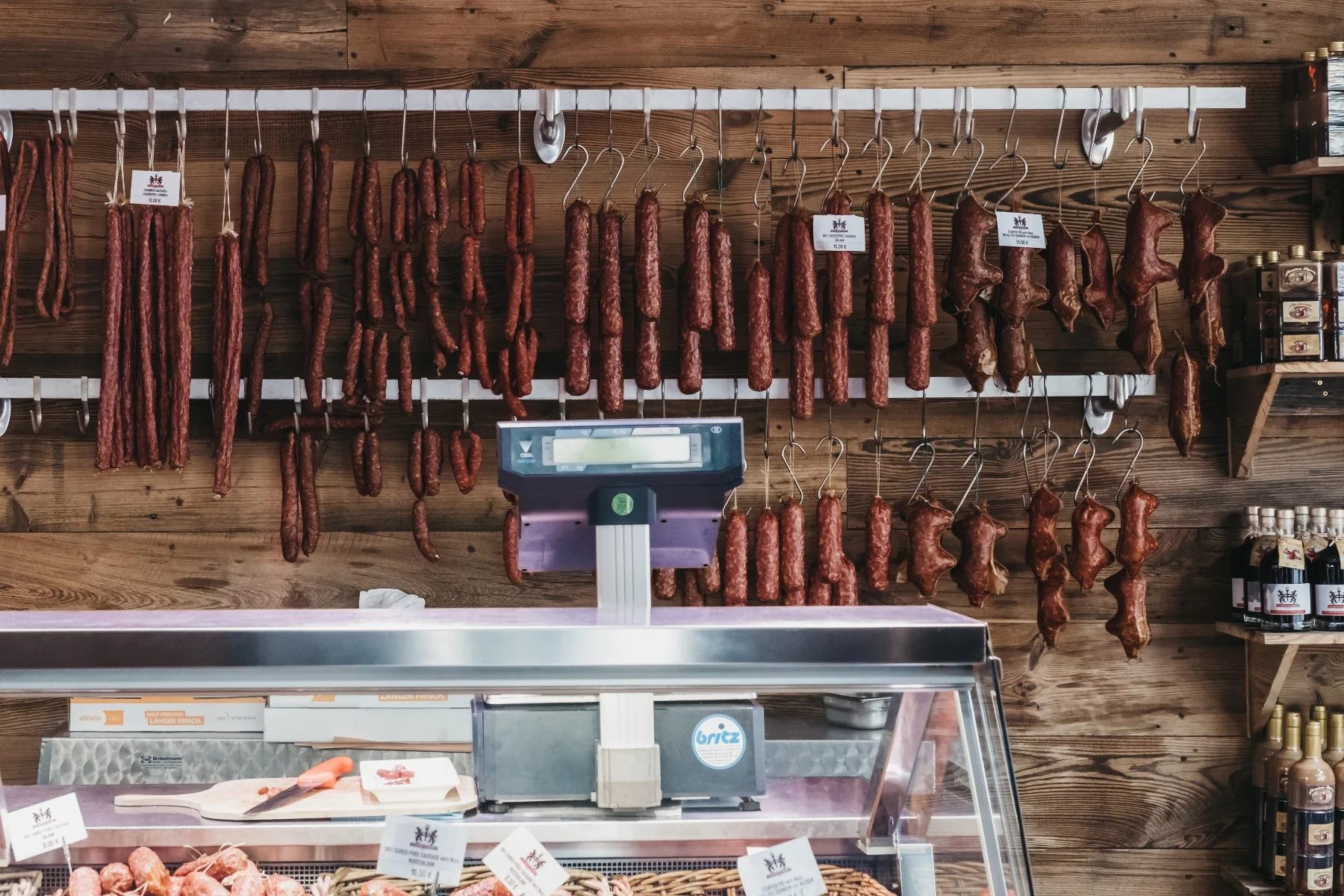
While shopping at the supermarket in Luxembourg, you might encounter a number of different food labels which indicate quality and production standards. The most recognized label, the Marque Nationale (website in French), guarantees the quality and the Luxembourg origin of products, including butter, wine, honey, Luxembourg Crémant, some additional alcohols, pork meat, and dried meat. Other food labels in Luxembourg are:
- Demeter – indicates organic farming methods
- Bio-label – also indicates organic farming methods
- HAAF – veal, lamb, pork, and poultry produced using environmentally friendly methods
- Produit du Terroir – beef produced in Luxembourg
Meats in Luxembourg
The German influence in Luxembourg is obvious from the different sausages (zoossiss) that you will see in Luxembourg cuisine. Typical sausages include:
- Treipen – a black pudding
- Mettwurscht – a spicy pork sausage
- Lëtzebuerger Grillwurscht or Grillinger (formerly called Thuringer) – a small spicy pork sausages served with white aspic
- Wirschtecher – Viennese sausages often prepared as Gromperenzaloot mat Wirschtecher (potatoes with sausages)
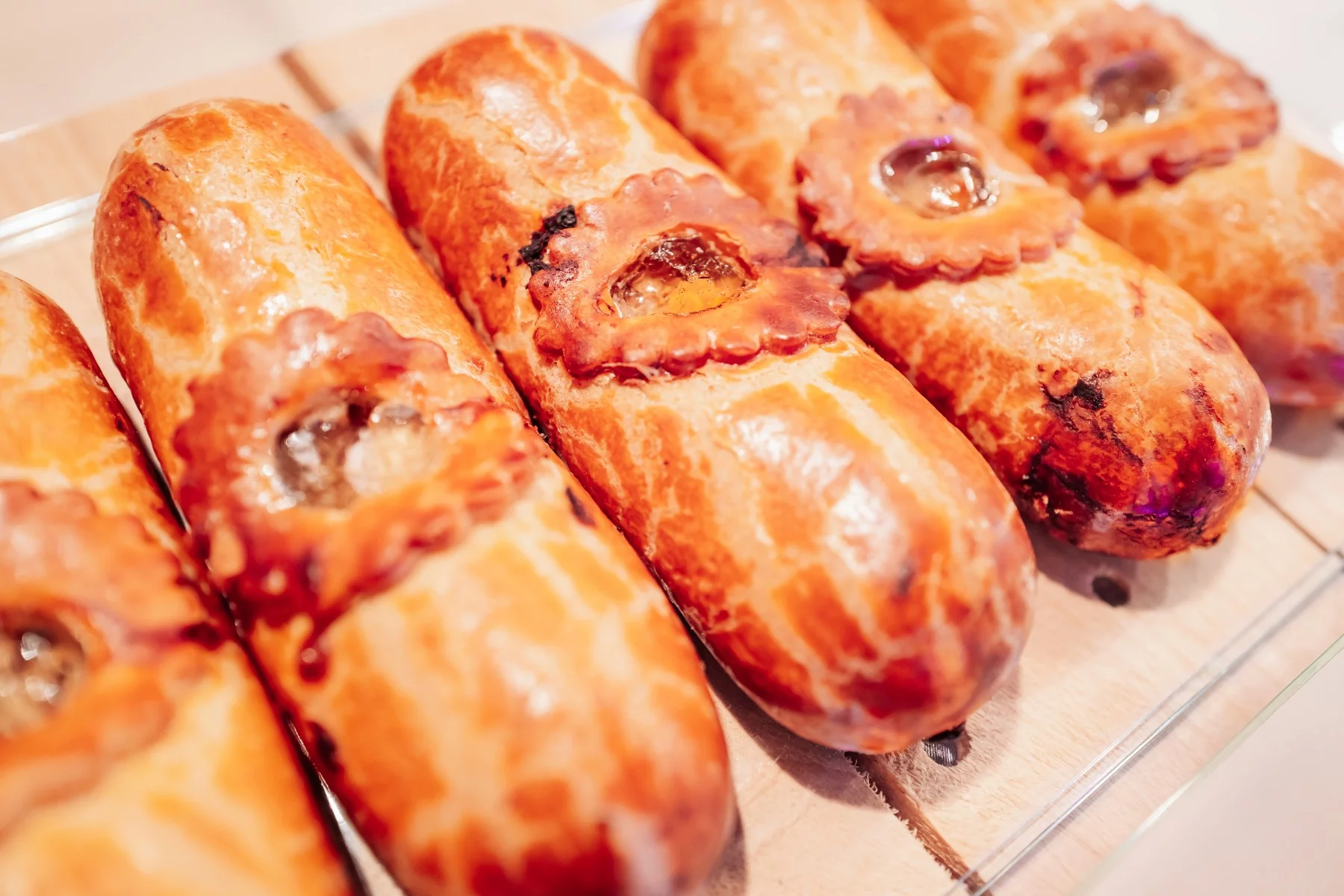
Other types of popular pork (schwäin) dishes are:
- Eisleker Ham – smoke-cured, usually served slim-sliced on bread
- Ham, Fritten, an Zalod – ham, chips, and lettuce
- Judd mat Gaardebounen – pork neck served with broad beans
- Salaisons Fumées Marque Nationale Grand-Duché de Luxembourg – hams made with legs of pork that carry the national quality label of Luxembourg or the equivalent foreign designation for pork
- Hausmacher Paté – pork liver spread to use on bread
Luxembourgers also typically eat a lot of beef (rëndfleesch) and chicken (poulet).
Fish in Luxembourg
Since Luxembourg is completely landlocked, the types of fish that you will find in traditional Luxembourg cuisine come from the local rivers. Luxembourgers often prepare trout (Frällen), pike (Hiecht), and crayfish (kriibsen). Popular fish dishes in Luxembourg include:
- F’rell am Rèisleck – trout in Riesling sauce
- Hiecht mat Kraiderzooss – pike in green sauce
- Fritür or Friture de la Moselle – a small fried fish from the River Moselle, accompanied by a local Moselle white wine
- Agemachten Hierken – pickled herring prepared with cream, cheese, onions, apples, and wine
- Gebaake Fësch – fried cod with chips
Fans of Portuguese cuisine will notice that bacalhau (dried cod) has found its way to Luxembourg. The Portuguese introduced this dish in the 1960s and it is now also popular in the Grand Duchy.
Vegetables in Luxembourg
As mentioned, the potato (gromper) plays a strong role in Luxembourg cuisine. You will often see cabbage (kabes), beans (bounen), asparagus (spargelen), and carrot (muert) too. Although they are not the healthiest option, potato fritters (gromperekichelcher) are also a local favorite.
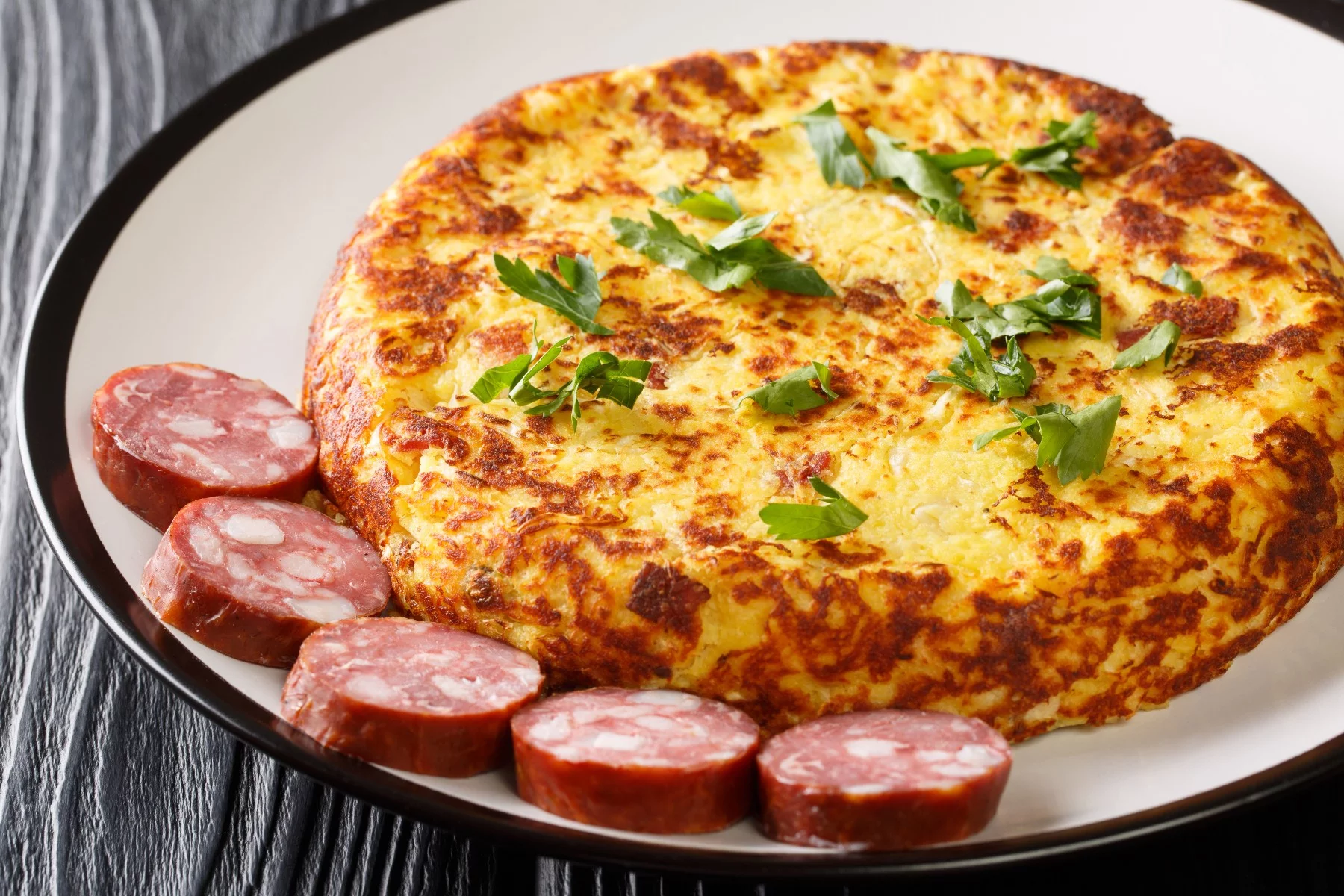
Many soups are also vegetable-based, although they often use bits of meat for flavor. Öennenzop is an onion soup that is served with cheese toast.
Fruit in Luxembourg
Many different kinds of fruits are grown in Luxembourg, especially in the east of the country. For example, you can find more than a hundred different varieties of apple (Äppel), such as the Rhineland Winter Rambour and the Luxembourg Triumph.
You can also find local varieties of pears (biren), cherries (kiischten), and plums (pflaumen). Luxembourgers also use local plums to make a tart called Quetschentaart, as well as local fruits and berries to make various liqueurs and brandies.
Carbohydrates in Luxembourg
Similar to their surrounding neighbors, Luxembourgers tend to eat a lot of bread (brout) and a Luxembourg classic is the Kiirmeskuch (raisin bread). As the country is home to many Italian immigrants, you will also find pasta (nuddelen) on most menus. Notably, Luxembourgers call pasta asciutta (which is also known as spaghetti bolognese), and Pastaschutta. While the authentic Italian pasta – asciutta – should not have a sauce, Luxembourgers tend to add mixed beef and pork mince in a tomato, onion, and garlic sauce.
Cheese and dairy products in Luxembourg
The Grand Duchy has a large dairy industry and a long history of cheese-making. Luxembourg’s cheese specialty is Kachkéis-Schmier, which is spreadable melted cheese with a distinctive taste that is similar to cooked French Camembert. People eat it with a small layer of mustard on top.
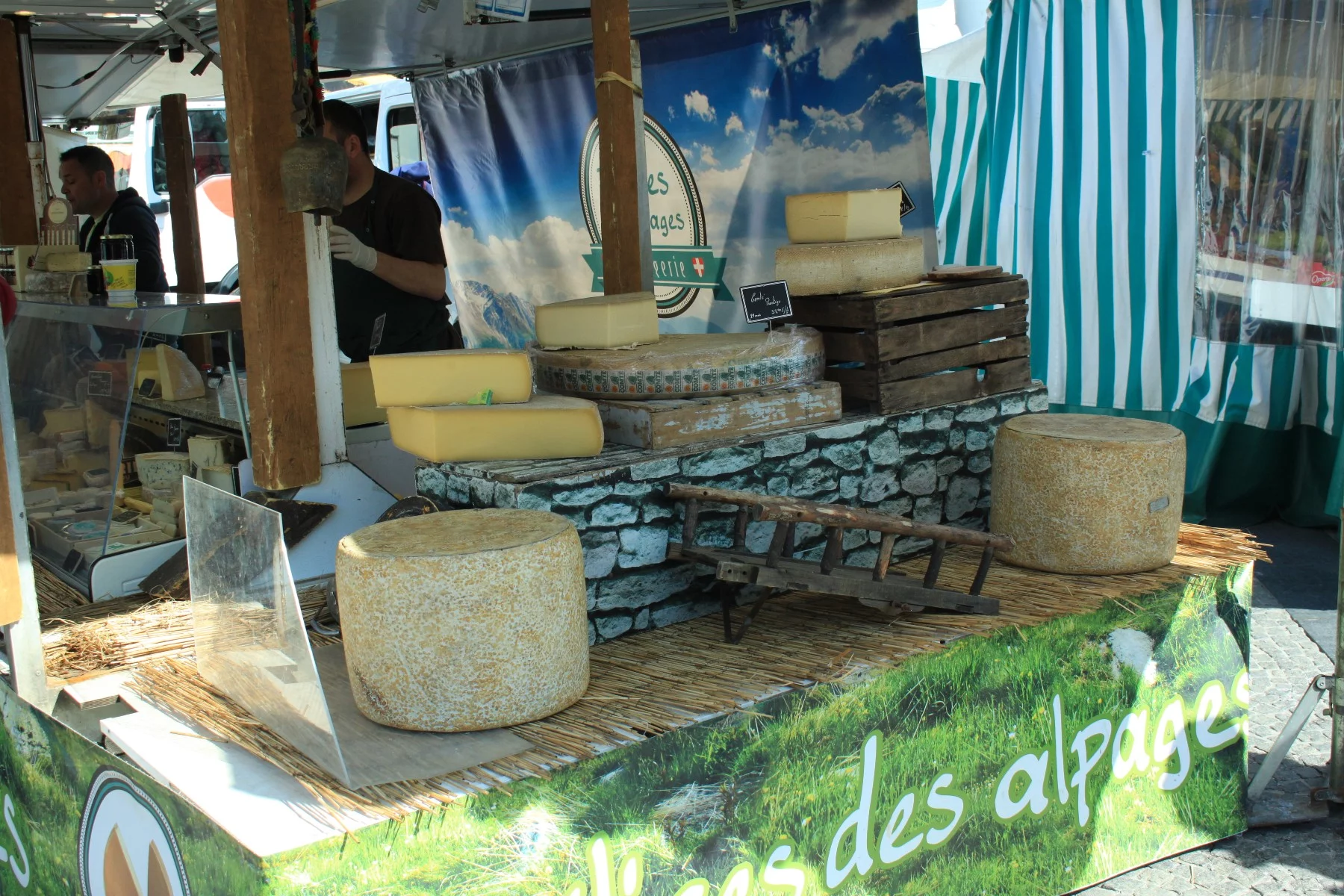
Other soft cheeses that come from Luxembourg are Cancoillotte and Wäissekéis. Another traditional product from Luxembourg is Rose butter. This butter is the oldest of the Marques Nationale quality label and the recipe dates back several centuries.
Herbs and spices in Luxembourg
Luxembourg cuisine uses few spices, although people do marinate and flavor many of their meats with herbs. The more traditional recipes are likely to call for:
- Knuewelek – garlic
- Lorbeerblieder – bay leaves
- Thymian – thyme
- Petersilie – parsley
All of these herbs are used to make pâté gaumais. For this recipe, Luxembourgers marinate prime cuts of pork for 48 hours in wine or vinegar with spices and herbs. They then stuff the pork into a yeast dough.
Sauces and condiments in Luxembourg
If you visit a local market in Luxembourg, you are likely to find someone selling Quetschenkraut, a traditional low-sugar plum jam. Another local delight is Miel luxembourgeois de Marque Nationale, a type of honey from Luxembourg that is protected under EU law. Luxembourg also produces Riesling wines and these are often added to local recipes such as F’rell am Rèisleck (trout in Riesling sauce).
Wine in Luxembourg
Luxembourg’s wine region is situated in the Mosel Valley along the German border. It is one of the most northern wine-growing and wine-producing regions in Europe. The wine label Marque Nationale-Appellation contrôlée certifies the quality of Luxembourgish wine.
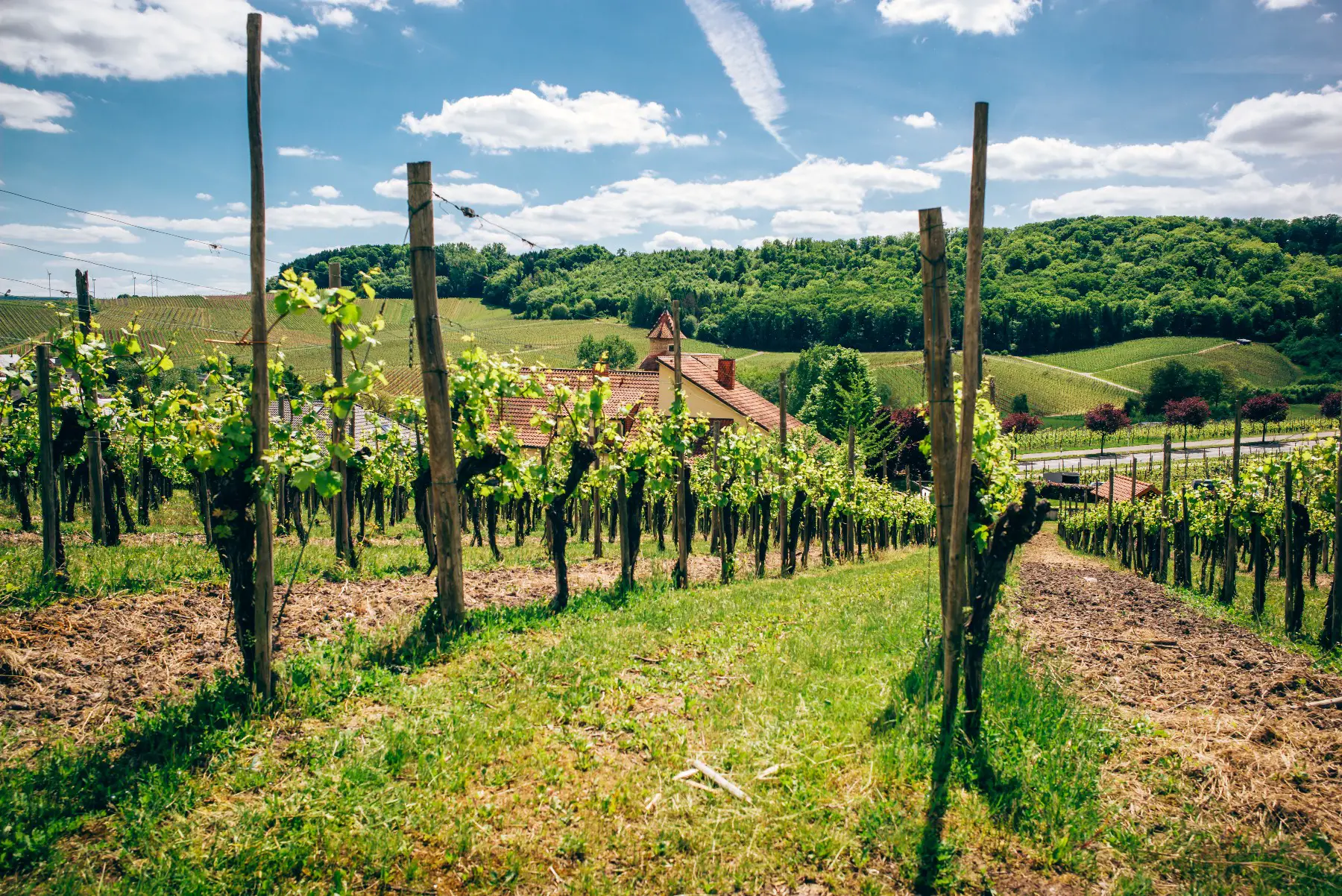
Crémant de Luxembourg is a sparkling wine that is made from the best variety of local grapes and produced in a traditional way. This includes a second fermentation in the bottle followed by nine months of maturation. Notably, Luxembourg is the only other country besides France that is allowed to use the term Crémant.
Luxembourg grows nine types of grape varieties for producing wine, as follows:
- Riesling
- Pinot gris
- Pinot blanc
- Auxerrois
- Pinot noir
- Gewürztraminer
- Rivaner
- Elbling
- Chardonnay
The most famous dishes in Luxembourg
The national dish of Luxembourg is Judd mat Gaardebounen. This traditional recipe is made by soaking smoked and salted pork neck (judd) in water overnight and then boiling it with vegetables and spices such as bay leaves and cloves. You will see it served in a huge portion with beans (gaardebounen) and boiled potatoes.
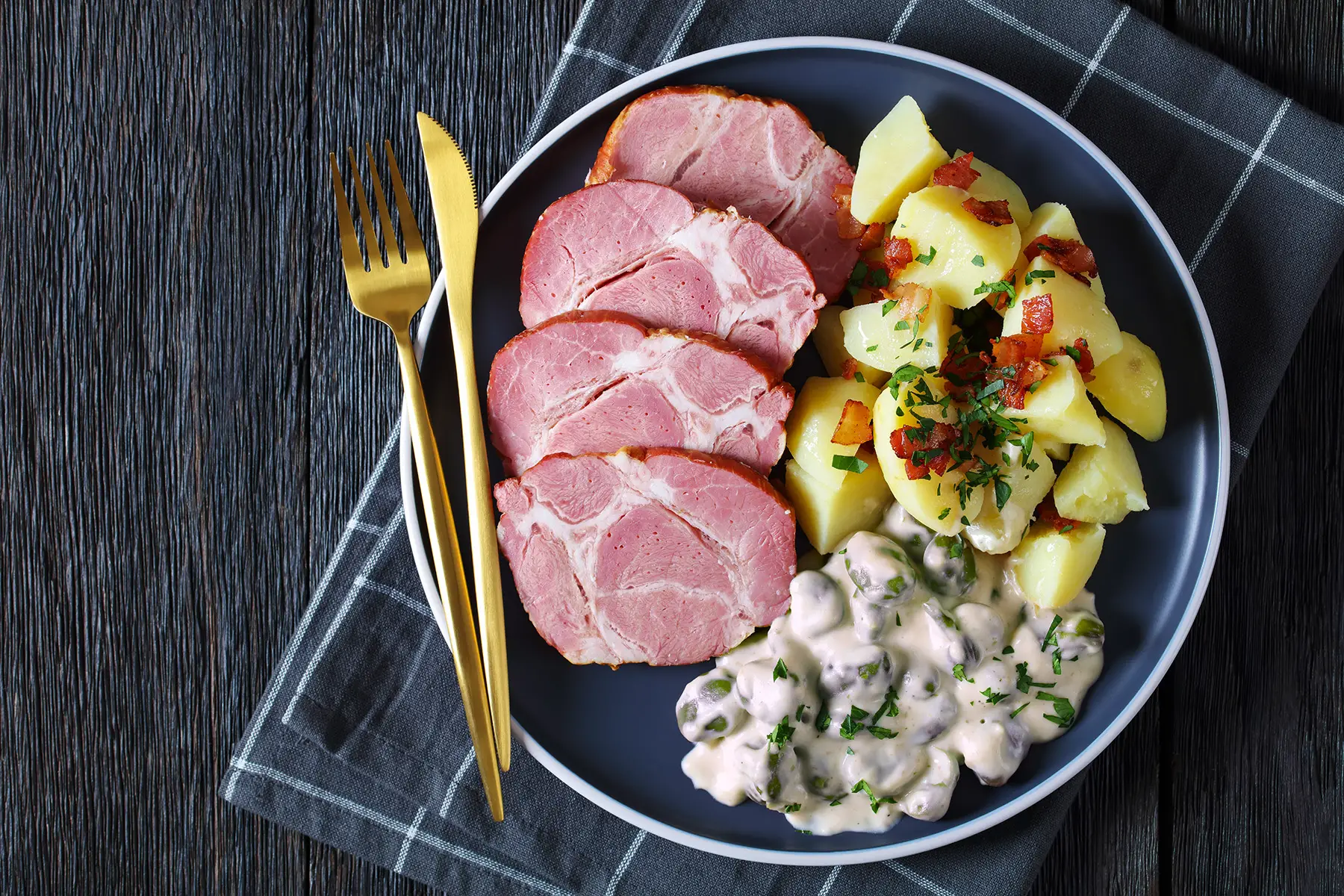
During the autumn game season in Luxembourg, you might find Huesenziwwi on menus across the country. This slow-cooked stew consists of marinated hare in a thick sauce made from hare or calf’s blood, red wine, and cognac. Some people also add vegetables to the stew and serve it with noodles.
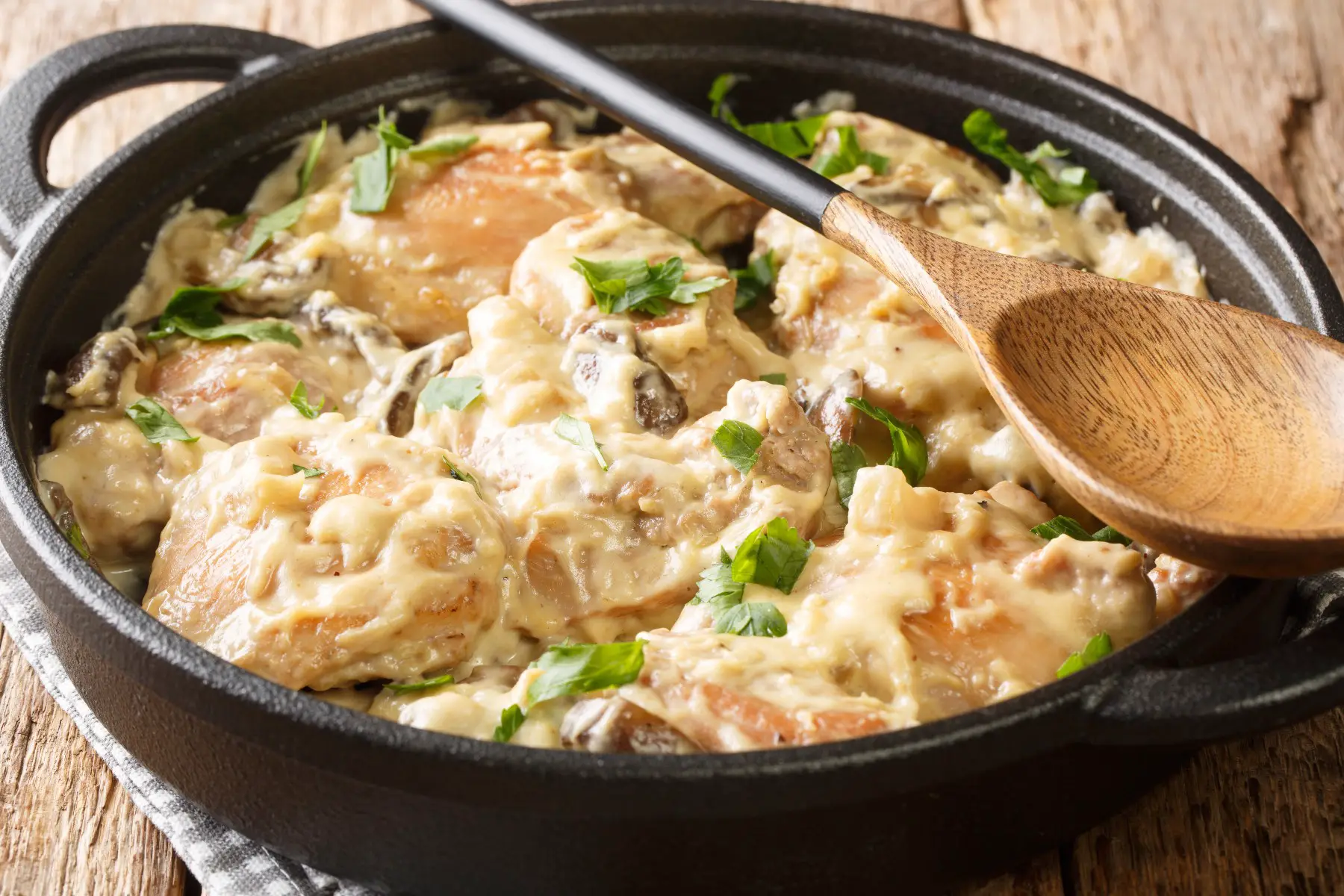
If you would rather eat poultry, though, look out for Hong am Rèisleck. This lesser-known specialty consists of chicken (poulet) smothered in a creamy Riesling wine sauce and served with noodles, vegetables, or dumplings.
The most famous desserts in Luxembourg
Luxembourg cuisine features many delightful pastries and desserts. These local recipes often call for local, seasonal fruit. For example, you will find Quetschentaart in bakeries all over the country during the autumn. People traditionally make this pie with a type of plum called a damson.
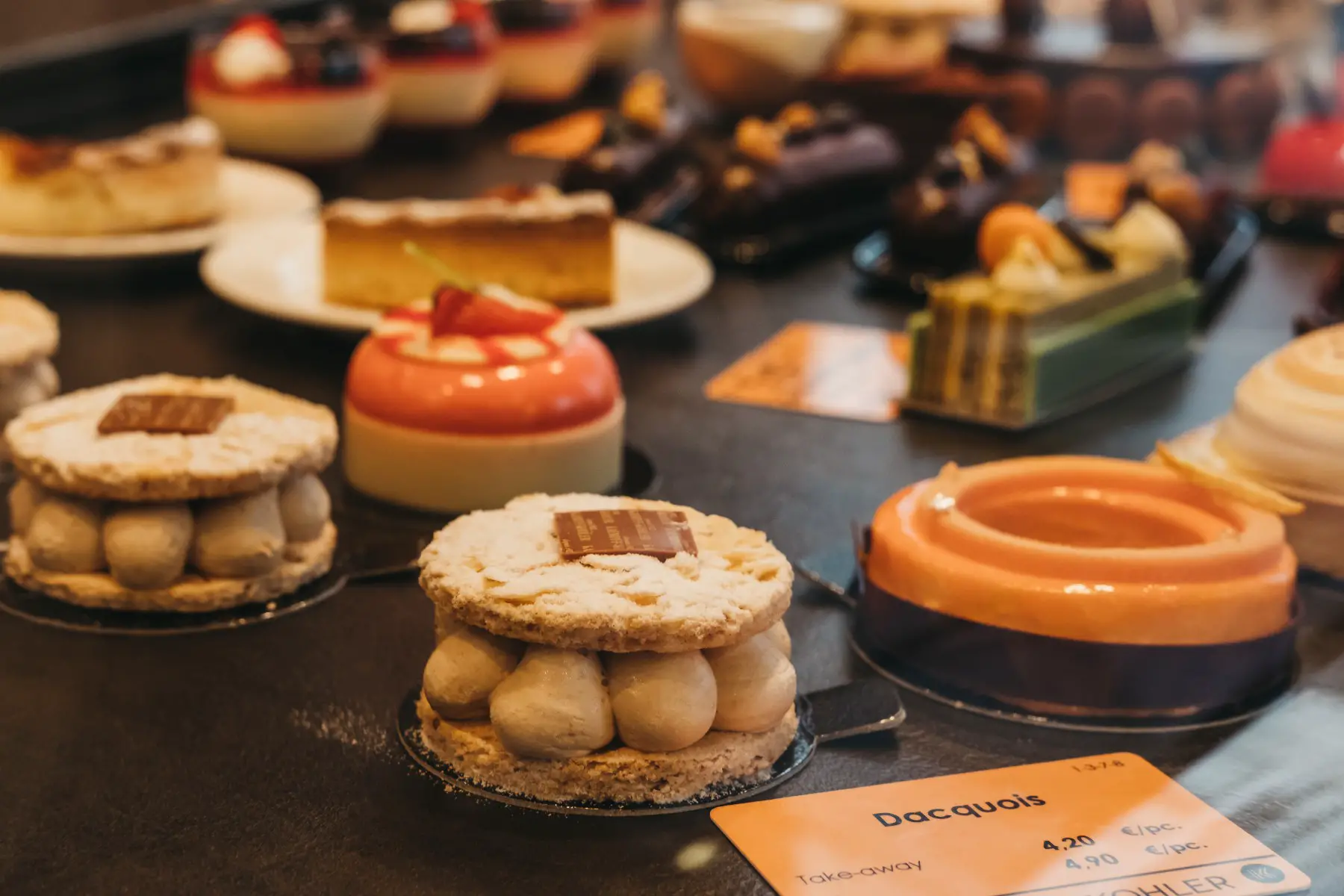
Äppelklatzen is another delightful fruit pastry dessert. In this case, apples are lightly cooked with cinnamon, nutmeg, and sugar then wrapped in pastry and baked until golden brown. You might also want to try a traditional donut called a Fueskichelcher. To make these, you shape the dough mixture into knots and then deep-fry them until they turn golden brown. You can then fill these light, fluffy donuts with jam or chocolate and dust them with powdered or granulated sugar. You can eat them either warm or chilled.
Regional differences in Luxembourg cuisine
As Luxembourg is a country that is both small in size and population, you won’t find many drastic variations in recipes throughout the country. That said, it is worth noting that Luxembourg City is home to more than 150 different nationalities. And you will certainly find this multiculturalism reflected in the local menus and markets. While traditional Luxembourg recipes are very meat-centric, Luxembourg City also offers more restaurant choices for vegetarians and vegans.
Useful resources
- Visit Luxembourg – the national tourism website which offers guides to food and culture
- Find a restaurant – a search engine from the official tourism site, Visit Luxembourg
- Visit Luxembourg City – information from the official tourism board of Luxembourg’s largest city
